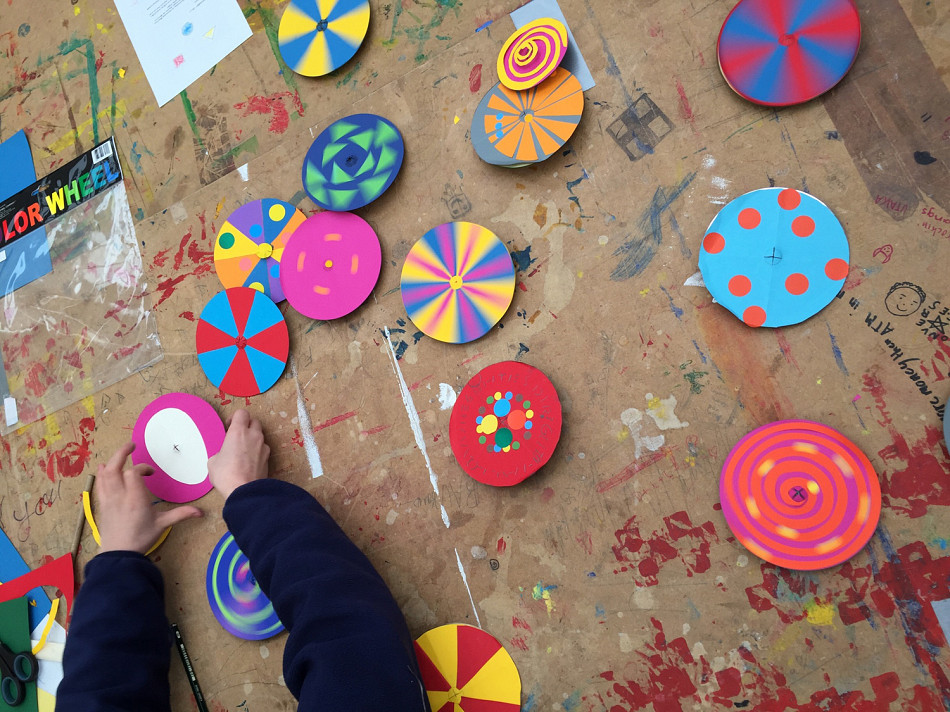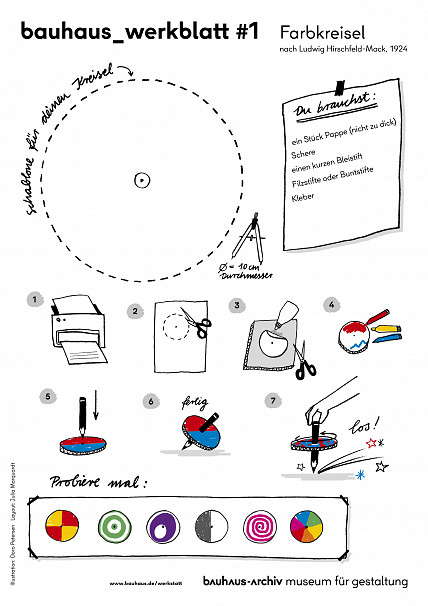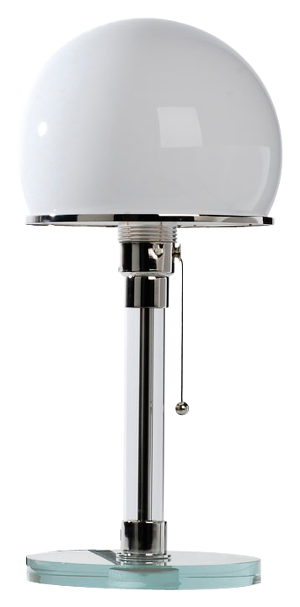bauhaus_worksheet #1: Colourful spinning tops
Ludwig Hirschfeld-Mack began his apprenticeship at the Staatliches Bauhaus in Weimar in 1919, the year in which the Bauhaus was founded. He attended the preliminary course with Johannes Itten and then became an apprentice for art printing in the printing workshop with Lyonel Feininger. Ludwig Hirschfeld-Mack was particularly interested in the effect of colours. He organised extra-curricular color seminars and developed, among other things, the Optical Colour Mixer and the Reflektorische Farblichtspiele with Kurt Schwerdtfeger.
Download the bauhaus_worksheet #1 (PDF)
You need:
- a piece of cardboard, not too thick
- a pair of scissors
- a short pencil
- felt tip pens or coloured pencils
- glue
Print out the worksheet. (Or use a compass to draw a circle 10 cm in diameter. Or trace a circle around a small plate.)
Cut out the circle along the dotted line.
Use the template to draw a circle on the piece of cardboard. Cut out the circle.
Colour the the top of the cardboard circle with the pencils. You can also paste coloured paper on it.
Place your stencil to fit exactly on the cardboard circle. Place the short pencil on the dot and mark the centre of the circle by piercing it. Drill a hole with the tip of the pencil and push the pencil through the cardboard.
The cardboard circle should sit around the middle of the pencil. You can fix it with some glue if you want.
Your spinning top is ready to spin: Set it in motion on a flat surface by twisting the pencil end between your thumb and fingers. What happens to the colours in the rotation?
Idea and concept: Doro Petersen


